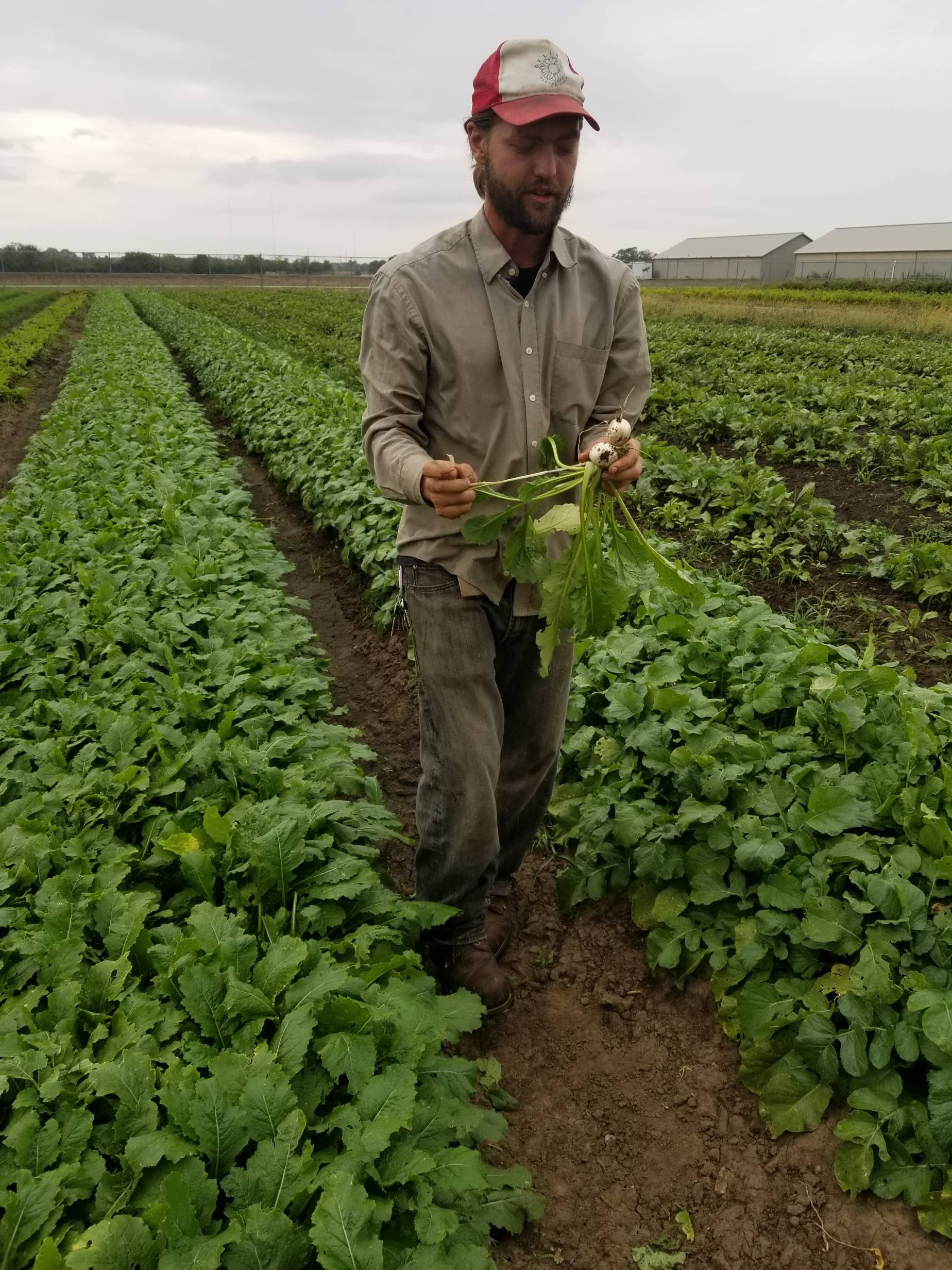Farm-to-table: it’s the idea that our food is pulled right out of the ground with one hand and placed onto our dinner tables with the other. With our backyard gardens and our organic supermarkets, it seems like we have reached the ideal. We are closer to the “farm-fresh” way of eating right now more than ever before. Yet, the 2008 documentary “Food Inc.” laid out that of the estimated 47,000 products that typically make up our supermarkets, 75% of them are produced by the same 4 multi-million dollar companies—including organics, generics, and variety types alike. So, it begs the question, how fresh is your dining table food on such a large scale? I looked to none other than my own current “dinner table” for the answer—the University of Illinois Dining Facilities. What I found was that with a little student help and a lot of funding, the University seems to have some form of the answer key— organic, locally sourced food.
What do you get when you mix environmentally-minded students with a 5-acre plot of farm land? At the University of Illinois, the answer is the Sustainable Student Farm, or the SSF. According to Farmer Stephan, a farmer on the SSF and graduate of the University of Illinois, being organic is a lifestyle that benefits more than just those who eat the produce. Some of the benefits include “not bringing in synthetic implants,” which is better for plant health, and having soil microbiota better able to break down components. It also lends itself to allowing biodiversity in the plants they grow, as well as the eco-systems that live in and around them. The farm produces a whopping average of 30,000 lbs. of produce each year, and sells around 20% of it directly to the students of the University through a weekly market on the main quad. The other 80% is mainly sold to University Dining through a partnership. How many plates, however, does this farm fresh food reach through the 80% that is sent to University Dining? Well, as it turns out, not very many.

Dr. Dawn Aubrey, the Director of Dining Services at University of Illinois, decides not only what food students eat at the dining halls, but also where it is from. During the academic year, University Dining serves around 40,000 meals. Yet currently, the food from the SSF only contributes to around 1% of that consumption. 28% of it is locally grown, and the rest are commercial products, mainly from California. “We’ve met the folks who make our coffee. We look for Fair Trade, Rainforest Certification, and we are buying from local sources who have buyers.” The goal of using local food is emphasized and exercised in University Dining, which leads to a sustainably minded outcome. According to Dr. Aubrey, they are “plant forward and focused,” and anything purchased is “produced and transported in a sustainable manner.” So why go invest in all those sustainable methods? For Dr. Aubrey, when you are feeding that many people, it boils down to what you care about. “It’s about values, you are entrusting us with your resources.”
With their values in the right places, Farmer Stephan and Dr. Aubrey provide University Dining with a more sustainable impact on the world. However, on the larger the scale, the 78% of University Dining consumption that is not locally produced strays away from being “locally-sourced” and ends up being grown and transported from elsewhere. As the 5-acre Sustainable Student Farm can only feed so many, more of our food is lost to chemical pesticides and harmful additives.
According to “Food Inc.” “as individual consumers, we have the power to shift the market.” But how exactly can you and I shift such a huge, pre-existing market? The answer lies in planting a home garden, buying from local farmers markets, and even changing our diet to be “plant focused” to create a better natural food system. We can strive to echo the ethos that Farmer Stephan sees when he tends to the farm everyday. “The future is aggregating smaller producers in a big way,” he stated, and this ideology is what can change our food system. It is not about making the SSF bigger, or making University Dining smaller. It is about watching what you buy, and where you buy it—and realizing a small change can make a big impact.








